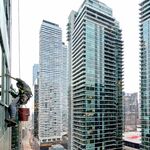nfitz
Superstar
Why would you want to stop anyone standing on the trains? It's a relatively short ride. Imagine the litigation issues if someone missed a flight because they couldn't stand on a train with plenty of space to stand!Im curious to know if there will be any type of quota enforcement for the trains. Whos to stop the trains to be loaded beyond seated capacity?
I don't see that there'd be any change in fare if your sitting or standing.




